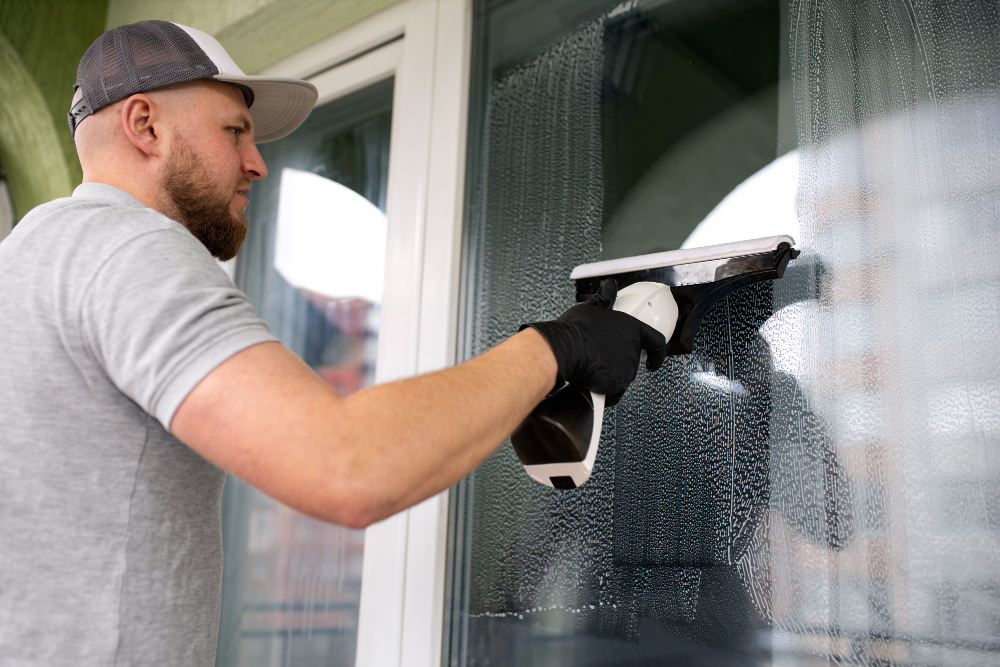What to Expect During Your Residential Window Tinting Installation

Residential window tinting is a great way to protect your home from the sun’s harmful rays, reduce energy costs, and increase privacy. If you’re considering getting your windows tinted, you might be wondering what the installation process involves.
Here’s a simple guide to help you understand what to expect during your residential window tint installation.
Choosing the Right Tint
The first step in the window tint process is choosing the right tint for your needs. There are different types of tints available, such as:
- Solar Control Films: These reduce heat and glare from the sun.
- Privacy Films: These provide additional privacy by making it harder for people to see inside.
- Decorative Films: These add a decorative touch to your windows.
- Security Films: These make your windows more resistant to breaking.
Your installer will help you choose the best option based on your needs and preferences.
Preparing for Installation
Before the installation day, there are a few things you can do to prepare:
- Clean Your Windows: Make sure your windows are clean and free of any dust or dirt. This helps the tint adhere better.
- Move Furniture: Move any furniture or items away from the windows to give the installer easy access.
- Remove Window Treatments: Take down any curtains, blinds, or other window treatments.
The Installation Process
On the day of the installation, the installer will follow these steps:
- Measure and Cut the Film: The installer will measure your windows and cut the tint film to the correct size.
- Clean the Windows Again: The installer will clean the windows again to ensure they are spotless.
- Apply the Film: The installer will apply the tint film to the window using a special adhesive. They will use a squeegee to smooth out any bubbles and ensure the film sticks properly.
- Trim the Edges: The installer will trim any excess film from the edges of the window.
- Final Inspection: The installer will inspect the windows to make sure the tint is applied correctly and looks good.
After the Installation
Once the tint is installed, there are a few things you should do:
- Wait to Clean: Wait a few days before cleaning the windows to allow the film to fully adhere. When you do clean them, use a soft cloth and mild cleaner.
- Avoid Scratching: Be careful not to scratch the film, as this can damage it.
- Check for Bubbles: If you notice any bubbles or imperfections, contact your installer. They can usually fix these issues easily.
Benefits of Window Tinting
After your windows are tinted, you can start enjoying the many benefits:
- Energy Savings: A window tint can reduce your energy bills by keeping your home cooler in the summer and warmer in the winter.
- UV Protection: The tint helps block harmful UV rays, protecting your skin and your furniture from sun damage.
- Increased Privacy: Tinted windows make it harder for people to see inside, giving you more privacy.
- Enhanced Comfort: Reduced glare from the sun makes your home more comfortable.
Common Questions
Here are some common questions people have about residential window tinting:
- How long does it take? The installation process typically takes a few hours, depending on the number of windows being tinted.
- Is it expensive? The cost varies based on the type of film and the size of your windows, but it is generally affordable.
- Can I do it myself? While it’s possible to tint your windows yourself, it’s best to hire a professional to ensure a smooth and bubble-free application.
- Will it make my home too dark? No, there are different levels of tint available, so you can choose one that suits your preferences.
Finding a Professional Installer
To get the best results, it’s important to hire a professional window tint installer. Here are some tips for finding a good installer:
- Check Reviews: Look for installers with good reviews and satisfied customers.
- Ask for Recommendations: Ask friends, family, or neighbors if they have any recommendations.
- Get Quotes: Contact a few different installers to get quotes and compare prices.
- Check Certifications: Make sure the installer is certified and experienced.
Conclusion
Residential window tinting is a simple and effective way to improve your home’s energy efficiency, comfort, and privacy. By understanding what to expect during the installation process, you can be well-prepared and enjoy the benefits of tinted windows in no time.








